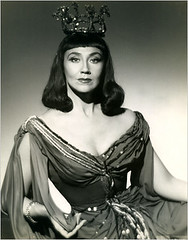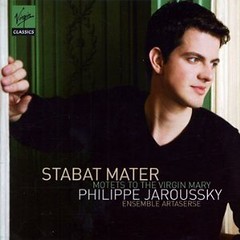
Ópera, ópera, ópera, ópera, cinema, música, delírios psicanalíticos, crítica, literatura, revistas de imprensa, Paris, New-York, Florença, sapatos, GIORGIO ARMANI, possidonices...
quarta-feira, 31 de março de 2010
Christoph Dammann

Últimas aquisições...

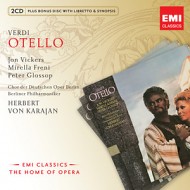
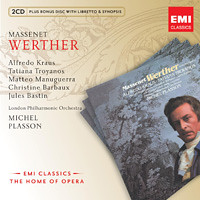
segunda-feira, 29 de março de 2010
Furia alla Scala (II), ossia Tannhäuser alla Scala, SI, SI!!!

Visivelmente, os La Fura dels Baus abandonaram a estética deplorável - que os acompanhou anos a fio -, assente na crueza (dilaceração, fragmentação). Devem ter recorrido à psicanálise, que lhe permitiu elaborar os fantasmas primitivos! Desde o Der Ring de Valência que, aos meus olhos, os catalães redescobriram a estética depurada!
Segundo reza a crónico, a encenação deste Tannhäuser milanês é um portento!
«(...) se ha presentado La Fura dels Baus, versión Carlus Padrissa, en La Scala con una obra de Wagner. Ni Goya ni La Fura dejan indiferentes, pero la polémica se ha inclinado en esta ocasión del lado operístico. Paradójicamente, Padrissa y su equipo se han volcado con esta nueva producción wagneriana con Zubin Mehta de responsable musical. Tal vez de esa fructífera identificación entre Mehta y Padrissa provenga una de las cuestiones más difíciles de aceptar por el público operístico tradicional: la ambientación del wagneriano Tannhäuser en la India y concretamente en el Rajastán. Lo justifica Padrissa por la pervivencia actual de los peregrinos a orillas del Ganges, en una atmósfera espiritual de resonancias medievales, más auténticamente pura, si se quiere, que las peregrinaciones religiosas de nuestros días en el mundo occidental. Además, la explosión colorista de los naranjas, amarillos, fucsias, del vestuario oriental, daba a la representación un tono explosivamente sensual y estéticamente bellísimo. La estructura dramatúrgica se mantiene a la perfección y el personaje central se debate entre el deseo carnal y el ansia espiritual, mostrándose el conflicto con criterios de universalidad y transparencia narrativa. ¿Dónde salta, pues, el conflicto? Pues seguramente en el deseo de mostrar el mundo moderno de India y, en concreto, en la inclusión de unas coreografías bollywoodienses en pleno concurso de los maestros cantores de Wartburg. Es la única nota de humor que el espectáculo tiene. Un sector del público no se lo perdonó a La Fura.
Blanche Thebom (1915 - 2010)

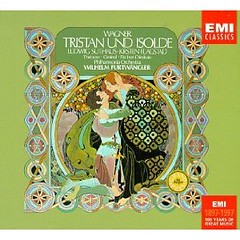
Embora Thebom fosse um mezzo verdiano de assinalável qualidade, foi em Wagner que mais se destacou, particularmente no Met, nos idos anos 1940 - 1960.
RIP
«Blanche Thebom, a mezzo-soprano who was discovered singing in a shipboard lounge as a teenager and went on to sing more than 350 performances with the Metropolitan Opera, died on Tuesday at her home in San Francisco. She was 94.
Her death was confirmed by Roger Greenberg, a longtime friend.
In a field long dominated by Europeans, Ms. Thebom (pronounced THEE-bom, with the th as in thin) was part of the first, midcentury wave of American opera singers to attain international careers. Associated with the Met from the mid-1940s to the mid-1960s, she was praised by critics for her warm voice, attentive phrasing and sensitive acting.
Reviewing her “Walküre,” a critic for The New York Times wrote that Ms. Thebom “scored an immediate success.”
At the Met, her other roles included Ortrud in Wagner’s “Lohengrin,” Azucena in Verdi’s “Trovatore” and Amneris in his “Aida,” and the title role in Bizet’s “Carmen.” She also sang at Covent Garden and the Glyndebourne festival in England.
Ms. Thebom last performed at the Met in 1967. She later directed the opera program at the University of Arkansas, Little Rock, and afterward moved to San Francisco, where she taught privately and helped create a training program for young singers.
In later years, Ms. Thebom appeared often in duo recitals with the soprano Eleanor Steber.
While still a teenager, Ms. Thebom traveled to Sweden with her parents in the 1930s. On the crossing, she was heard singing in the ship’s lounge by Kosti Vehanen, a pianist who often accompanied the contralto Marian Anderson. Mr. Vehanen arranged for Blanche to study in New York, where her primary teacher was Edyth Walker, a former Metropolitan Opera mezzo.
Ms. Thebom’s marriage, to Richard Metz, ended in divorce. No immediate family members survive.
Her recordings include Mozart’s “Così Fan Tutte,” in which she sings Dorabella, on the Sony Classical label, and albums of songs by Hugo Wolf and Robert Schumann for RCA Victor. She appeared in films, among them “Irish Eyes Are Smiling” (1944) and “The Great Caruso” (1951).
Ms. Thebom’s career seemed ordained from the moment she stepped onto the New York stage. Making her recital debut at Town Hall in January 1944, she sang a program of Massenet, Handel, Mussorgsky and Brahms.
Reviewing the concert, The Times called her a “richly gifted young artist,” adding, “Her work revealed a wealth of temperament and an inherent musicianship that presage a brilliant career.”»
domingo, 28 de março de 2010
Wolfgang Wagner (III), obituário

In 1976, the centenary year of The Ring, he surprised many by abruptly divorcing his wife Ellen after 33 years of apparently contented life together. He and Wieland had both married dancers from Heinz Tietjen's ballet troupe during the second world war. Wolfgang's second wife was a long-standing member of the Bayreuth press office and programme department, Gudrun Armann who had been the wife of Dietrich Mack, joint editor of his grandmother Cosima Wagner's diaries; Gudrun died in 2007.
The resurrection of the festival after the second world war was by no means automatic. Wolfgang, born in Bayreuth, studied the trumpet and French horn before being called up in 1939. He fought on the Polish front, but was invalided out with a wounded hand and treated in the Charité hospital in Berlin, where he was frequently visited by Adolf Hitler. Discharged from the army, Wolfgang served his operatic apprenticeship in Bayreuth and at the Berlin Staatsoper – getting the chance also, as did Wieland, to mount operas by their father Siegfried in regional houses. Richard Wagner's wooden Festspielhaus survived the bombing, but Wahnfried, Wagner's Bayreuth home, now a museum, received a direct hit.
None of this could remotely have been predicted in 1945. Richard Wagner's music still commanded a huge following. But the fact that Hitler had been such a devoted fan of the composer seemed like an indelible black mark – as if the young Dresden socialist composer's notorious antisemitic writings in the mid-19th century meant he would have wanted the 1940s Holocaust. Certainly, after the death of the composer's only son Siegfried in August 1930, following his mother Cosima's death that April, his 33-year-old widow Winifred passed up no opportunity for expressing her personal devotion to the Führer. It was also true that Hitler's love of Wagner – not shared by many of his henchmen – guaranteed the Bayreuth festival unprecedented security.
sábado, 27 de março de 2010
Wolfgang Wagner (II), ossia o Gestor Cultural

A 21 de Março, com 90 primaveras, falece Wolfgang Wagner. Com grande pena minha, acrescento e sublinho.
Wolfgang sempre foi ofuscado pelo génio do irmão Wieland, cujas sublimes encenações mantêm, hoje como ontem, toda a actualidade e deslumbramento. Onde Wieland era criativo, Wolfgang era astuto e pragmático. Com punho de aço ou sem ele, Wolfgang geriu o Festival de Bayreuth sabiamente sendo, desde o prematuro falecimento do irmão, em 1966, o sumo farol do mesmo evento.
Provas da sua fantástica gestão? A dupla Boulez / Chéreau, que encenou o centenário d’O Anel, em 1976, trabalhou e criou, apenas e só, por Wolgang Wagner. Toda a nata da mise-en-scène que pisou Bayreuth, desde meados da década de 1960, fê-lo conduzida pelo hábil e astuto braço de Wolfgang. And so on...
Aqui para nós, fiel e paciente leitor, se os abomináveis cancros que têm passado pelo nosso São Carlos tivessem um décimo do talento de WW, outro galo cantaria na sala lisboeta!
É certo que as encenações do Senhor W. Wagner rapidamente passaram à história. E então? Gobbi, que era um intérprete genial, como metteur-en-scène, nunca saiu do anonimato...
Com ou sem talento artístico, mais ou menos ligado ao nazismo, prepotente ou não, Wolfgang Wagner era uma referência na gestão cultural. Indubitavelmente.
Paz à sua Alma.
«Mr. Wagner was considered an able administrator if a rather stolid opera director. (In 2001, The New Criterion called him the “supremely less talented” of Siegfried Wagner’s two sons.) Over the decades, he was described variously as a savior and a dictator.
Hamlet - Met Opera House

Furia alla Scala (?!)

(ensaio de Tannhäuser, Teatro alla Scala, Milão)
Por fim, os catalães La Fura dels Baus acedem à catedral da lírica europeia, ossia o Teatro alla Scala, por ocasião de uma nova produção de Tannhäuser (Wagner).
Em sintonia com o maestro Zubin Mehta, declaram os catalães:
«"La identificación con Zubin Mehta es total. Con él cambio impresiones, discuto y recojo todas sus sugerencias. El punto de partida escénico de Tannhäuser salió precisamente de una conversación con él. Le pregunté cuál era su Venusberg ideal y me contestó que el de los colores intensos de las mujeres indias en los festivales del Rajhastán. Tres meses después fui con mi familia a Benarés y pude comprobar, rodeado de miles de peregrinos en las orillas del Ganges, no solamente la explosión y sensualidad de los colores a que hacía referencia Zubin, sino también que en India se conservan vivas las creencias y costumbres de la Edad Media. Era un lugar óptimo para ambientar Tannhäuser. Entre los letreros de anuncios luminosos y los antiguos templos, entre la industria de Bollywood y las peregrinaciones multitudinarias, se entremezclan eternamente los mundos del Wartburg y el Venusberg, el conflicto entre espiritualidad y deseo irracional al que Wagner hace referencia continuamente en esta ópera", explica.Y prosigue: "En realidad lo que trato de mostrar es a Tannhäuser como un personaje universal, quiero hacer a través de él un homenaje a todos los grandes creadores que por diferentes motivos han vivido trágicamente entre el Venusberg y el Wartburg, entre la pasión y la razón espiritual. Es el caso de Marilyn Monroe, de Giordano Bruno, de Pasolini, de Schubert, de Janis Joplin, de Mozart, de John Lennon, de Dalí, de Modigliani y hasta del propio Wagner. La lista es interminable".»
Disse-me um passarinho...

sexta-feira, 26 de março de 2010
Così, così...

Damrau repete, repisa e revisita, clássicos do repertório ligeiro, spinto. Sem nada acrescentar, nem arriscar, limita-se a interpretar pobremente este território.
A técnica apresenta algumas hesitações, estando a voz menos redonda do que noutras ocasiões. Aqui e ali há laivos de estridência...
Apenas para incondicionais de Diana Damrau.
______
* * * * *
(3,5/5)
terça-feira, 23 de março de 2010
domingo, 21 de março de 2010
Rei Édipo - Teatro Nacional D. Maria II

Rei Édipo, em cena no D. Maria: TRIUNFO ABSOLUTO!
Infante propõe uma interpretação avassaladora, profunda, sofrida e amadurecida pela idade (maior), numa encenação arrojadíssima - Silva Melo -, com figurinos de um requinte blasé...
Há décadas que não via teatro desta nobreza e envergadura.
quinta-feira, 18 de março de 2010
Christoph Dammann & Mário Vieira de Carvalho
terça-feira, 16 de março de 2010
domingo, 14 de março de 2010
Wagnerito

Pouco mais que morno, este Wagner...
Seiffert, de fraseado elegante e timbre heróico, com uma bela figura, nos idos anos que iniciaram o século, era o maior rival de Ben Heppner. Ambos personificavam o heldentenor.
Na actualidade, Seiffert mantém o estilo, mas a pujança é coisa pretérita... O desgaste é notório, particularmente no descontrolo do vibrato.
Petra Maria Schnitzer, neste registo, oferece-nos interpretações banais, apoiadas numa técnica falível – a estridência e errância dos agudos... Sem estilo wagneriano – sem porte, nem veia romântica -, dilui-se num anonimato perpétuo... O timbre contém laivos de elegância, mas pouco mais.
Enfim, dir-se-ia tratar-se de um retrato wagneriano banal, protagonizado por dois artistas a dois passos do ocaso.
* * * * *
(3/5)
sábado, 13 de março de 2010
Novidades... ou VIRA O DISCO E TOCA O MESMO?!
Pessoalmente, parece haver uma mera transformação dos invólucros... Se há, ou não, melhorias na qualidade da difusão sonora dos registos, desconheço... O meu prosaico ouvido não é sensível à melhoria de qualidade apregoada pela empresa.
O ponto mais central prende-se com o engodo em que o incauto comprador pode cair: quase todos os registos que apresento abaixo já figuravam noutras colecções, mid-price, que incluíam os libretos. Pois saiba o respeitável leitor que esta “nova” reabilitação, não só não contém os ditos libretos, como é comercializada a preços que roçam o obsceno!


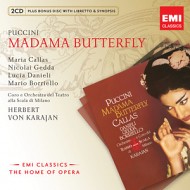
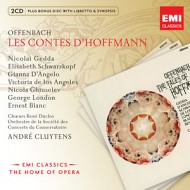

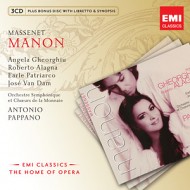
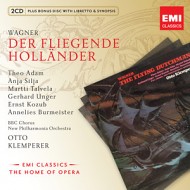

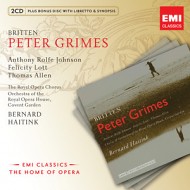


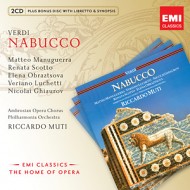

terça-feira, 9 de março de 2010
Philip Langridge (1939 - 2010)

«One of the world's finest operatic tenors, Philip Langridge, has died aged 70. Tributes were led by the Royal Opera and the composer Sir Harrison Birtwistle, who called him a "unique artist-musician" who left "a large hole in the world's music".
Langridge appeared on all the world's great stages after his career began at Glyndebourne in 1964, in Richard Strauss's Capriccio. Before being taken ill he was on stage over Christmas at the Met in New York, enthusiastically baking children as a dragged-up Witch in Hansel and Gretel.
Langridge's repertoire was strikingly varied, but he also became closely associated with the works of Janacek, the big Britten roles such as Aschenbach and Peter Grimes and contemporary work, in particular Birtwistle.
He sang regularly at Covent Garden and the Coliseum but was in demand all over the world. The Royal Opera's director of opera, Elaine Padmore, said: "It was a huge shock when we heard very recently that Philip had cancer, and more so when we heard how quickly we were going to lose him.
"His intelligence, his humour, his wonderful voice and superb musicianship, his compelling presence on stage, the many roles he made his own – his Loge here is etched in the memory, and Lulu only last season – all these come to mind, together with the obvious pleasure he felt at singing in Harrison Birtwistle's The Minotaur, directed by his son Stephen. All these wonderful things about Philip will be sorely missed as well as his broad smile and great storytelling."
Birtwistle said: "I first encountered Philip Langridge in the 1960s as a member of the John Alldis Choir along with John Tomlinson. Since then I have had a more or less continuous working relationship with him which ended in his last Wigmore Hall recital, when I wrote a song for him. He was a unique artist-musician and his death leaves a large hole in the world's music."
Langridge was born in Hawkhurst, Kent. Over the years he has often been called the natural successor to another outstanding English tenor, Peter Pears, the partner of Britten, albeit a distinctive one.
He leaves a widow, the mezzo-soprano Ann Murray, and four children from his two marriages.»
RIP...
Andrea Chénier - Teatro Real, Março de 2010

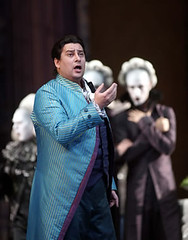

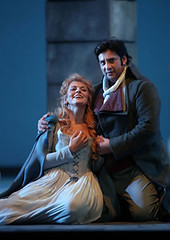

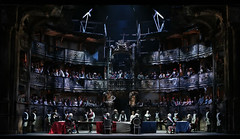
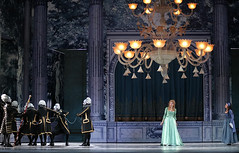
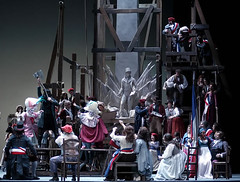
Em quen linha se increverá Marcelo Álvarez: elegante-spinto, à la Corelli, ou mais bruto-spinto, à la Del Monaco?
É esperar para ver...
segunda-feira, 8 de março de 2010
O Bronze do Reno

(cena de O Ouro do Reno, Opéra National de Paris, Março de 2010)
A avaliar pela morna crítica, este prólogo - ora em cena na Bastilha - d' A Tetralogia de Wagner, não convence... Uma vez mais, a fragilidade de O Ouro do Reno, mais do que interpretativa e / ou vocal, parece decorrer de uma mise-en-scène avant-garde, démodée... Se é que o paradoxo me faz explicar: obcecada com a desconstrução e desvirtuamento, exploradora do sórdido e decadente.
J'en ai assez de cette sorte de mise-en-scène!
«Le metteur en scène Günter Krämer connaît son métier et s'y entend en dramaturgie : il n'ignore rien des rouages politiques de l'ouvrage et s'attache à les démonter avec une ironie moqueuse. Elle n'est pas déplacée dans ce prologue où les dieux sont de sacrés imposteurs et dont la suprématie repose sur la duplicité. Des dieux de pacotille qui règnent sur un faux globe terrestre et revêtent des bustes postiches.
Distribution homogène
Dans ce monde frelaté, les géants ouvriers sont des égoutiers avec casque et cagoule, formant un peuple révolutionnaire prêt à brandir le drapeau rouge pour s'affranchir. Dans ce monde de clans corrompus, où les filles du Rhin sont des cocottes à paillettes, Loge est un cabarettiste persifleur qui raille ces fieffés décadents, mais son costume est souillé d'avoir trop séjourné dans les ordures. Cette démythification est légitime mais guère nouvelle : typique de la plupart des mises en scène allemandes depuis trente ans, la démarche a quelque chose d'éculé. Si certaines images, comme l'avancée du Walhalla ou les effets de miroirs, sont fortes, l'esthétique relève plutôt d'un patchwork paresseux, non sans gros sabots.
On attendait beaucoup de Philippe Jordan et de l'Orchestre de l'Opéra de Paris. Le soir de la première, depuis le septième rang du parterre, on entendait une direction claire et fluide, mais aussi lointaine et lisse, impression liée tout à la fois à une fosse trop profonde et à une prudence qui nous privait de contrastes et de tension. Témoin le prélude, transparent mais sans progression. À suivre ! La distribution homogène et de qualité, avec en particulier l'Erda toujours époustouflante de Qiu Lin Zhang, mais aussi l'Alberich mordant et présent de Peter Sidhom, la Fricka généreuse et sensuelle de Sophie Koch, desservie par la mise en scène, deux ténors bêtes de scène (Kim Begley et Wolfgang Ablinger-Sperrhacke), deux basses de tout premier ordre (Iain Paterson et Günther Groissböck), le Wotan de Falk Struckmann se révélant le seul point faible par sa voix instable et terne.»
